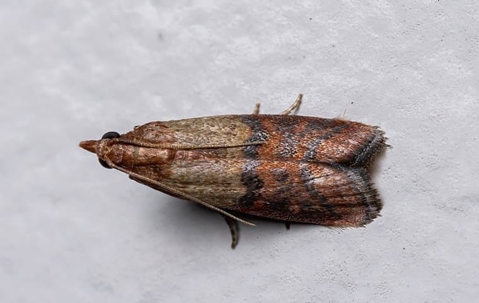The discovery of pantry moths in your stored food items can trigger a range of reactions, none of which are pleasant. These small, fluttering insects can invade and spoil your dry goods, turning what was once a well-organized pantry into a breeding ground for these pests. Seeing larvae wriggling in your grains, cereals, or dried fruits can be particularly disheartening and incredibly disturbing. It's especially difficult knowing you now have to throw out food items you thought were perfectly fine.
Thankfully, Lake Norman Home Services provides the most effective and reliable pantry moth control in Mooresville to quickly obliterate these intrusive insects, making sure you never have to fear your kitchen or food storage areas again. Continue reading to learn more about why Mooresville pest professionals are the perfect ally to stamp out a pantry moth problem.
Pantry Moth Life Cycle: Understanding Their Behavior
The pantry moth life cycle consists of four unique phases: egg, larva, pupa, and adult. The adult moths are typically small, with a wingspan of about 5/8 of an inch, and characterized by their mottled grayish-brown appearance. These moths lay their eggs on or near stored food products like grains, flour, nuts, or dried fruits. Once the eggs hatch, the larvae emerge and start feeding on the stored food, creating silk webbing as they go.
The larvae are the most destructive stage, causing contamination and food spoilage. As they feed and grow, the larvae create cocoons before entering the pupa stage, where they undergo a major transformative process called metamorphosis. After this brief period, they finally emerge as adult moths, ready to start the cycle anew.
For more information about these types of pests, get in touch with your local pest management company.
Pantry Moth Problems: How They Can Ruin Stored Food
A pantry moth infestation is particularly problematic because it can ruin stored food. The larvae feed voraciously on grains, flour, nuts, dried fruits, and various other pantry staples, contaminating the products with their silk webbing, excrement, and casings. This not only leads to extensive food wastage and poses health risks if infested products are inadvertently consumed.
Furthermore, pantry moths are persistent pests, making them challenging to completely eradicate once they establish a presence in your kitchen. The frustration and inconvenience they bring in food damage and the effort required to eliminate them make pantry moths a significant nuisance for property owners.
Moth-Proofing Your Pantry: Practical Steps To Take
Want to know the best pantry moth repellent? It’s prevention, which is the number one way to safeguard your kitchen and food storage areas consistently. We’ve provided these essential steps you can take to avoid dealing with these insects in the future:
- Carefully examine packaged food items for tampered seals or damage before purchasing them.
- Store grains, cereals, nuts, and other susceptible pantry items in airtight containers made of glass, plastic, or metal.
- Routinely clean and vacuum your pantry, cabinets, and shelves, removing crumbs and spills.
- Dispose of any infested items you spot by quickly putting them in sealed bags before throwing them out.
For more information regarding beneficial ways to keep pantry moths out of your kitchen and food storage areas, consult with qualified pest specialists near you.
Calling In The Experts: Professional Pantry Moth Elimination
For home pest control, you can count on to eliminate these insects in record time, contact the professional team at Lake Norman Home Services. We strive to improve the lives of our residents by creating pest-free environments that are healthy, safe, and comfortable. Avoid the hassle of attempting to tackle an infestation yourself. Reach out to us today to receive your complimentary estimate.

